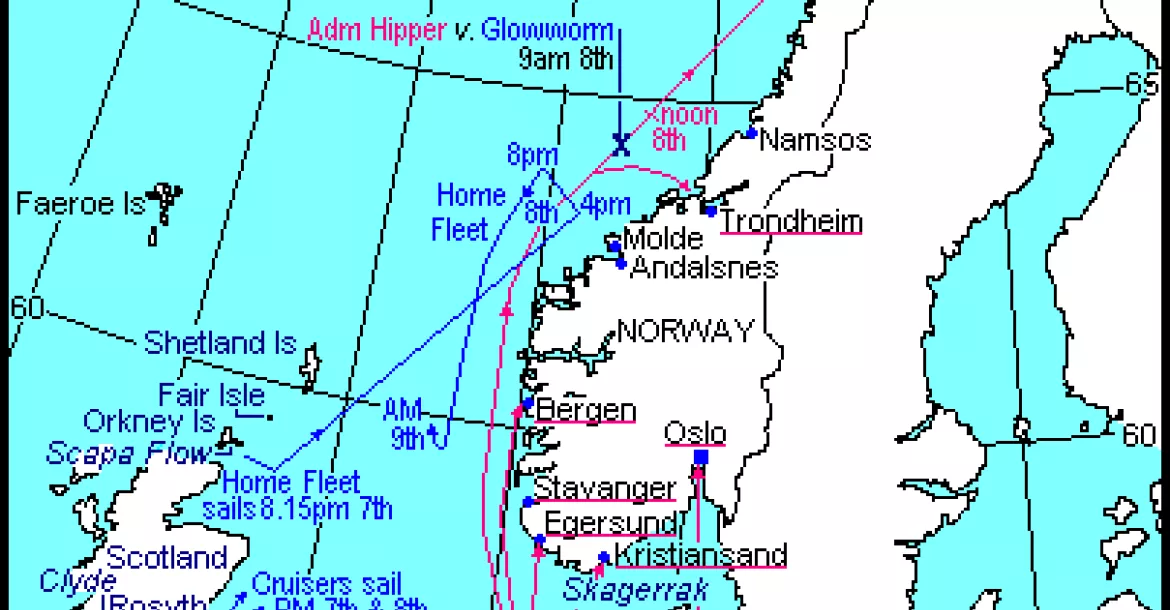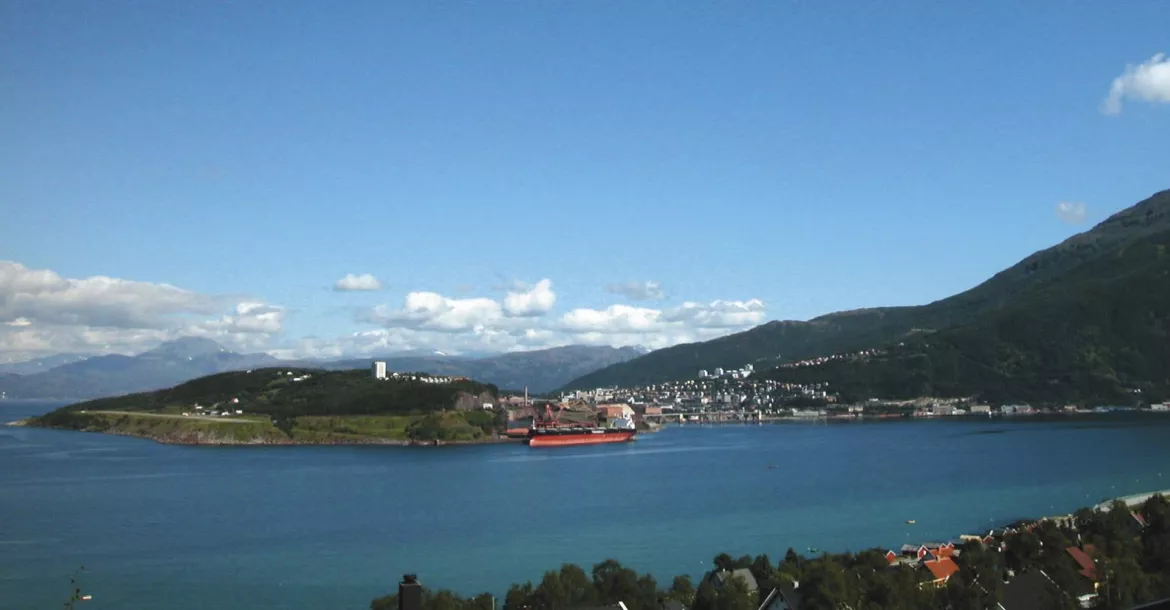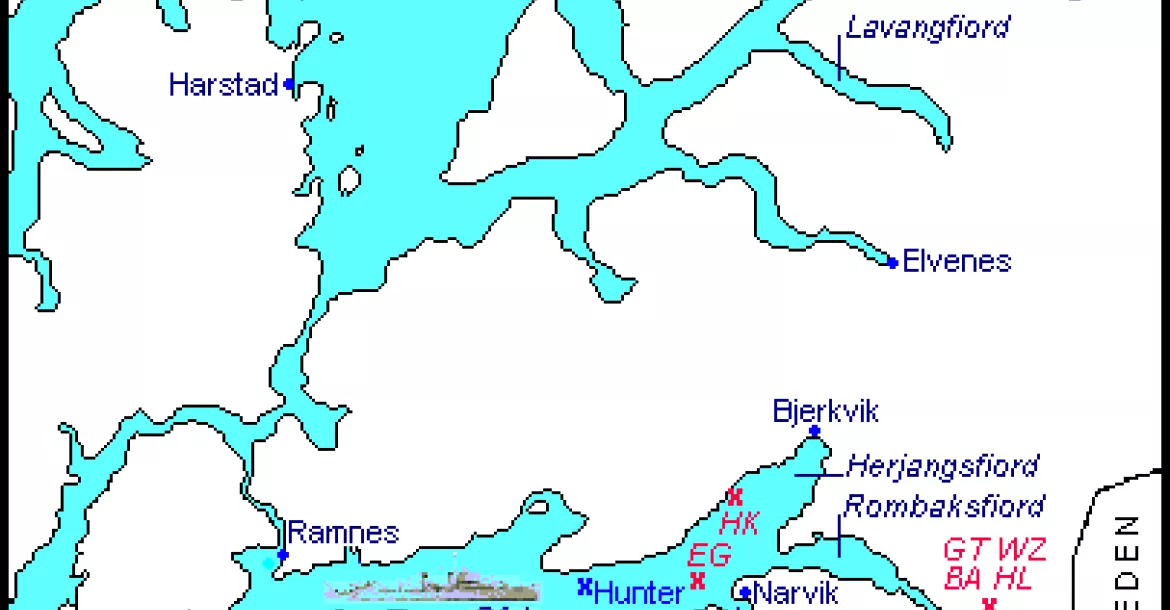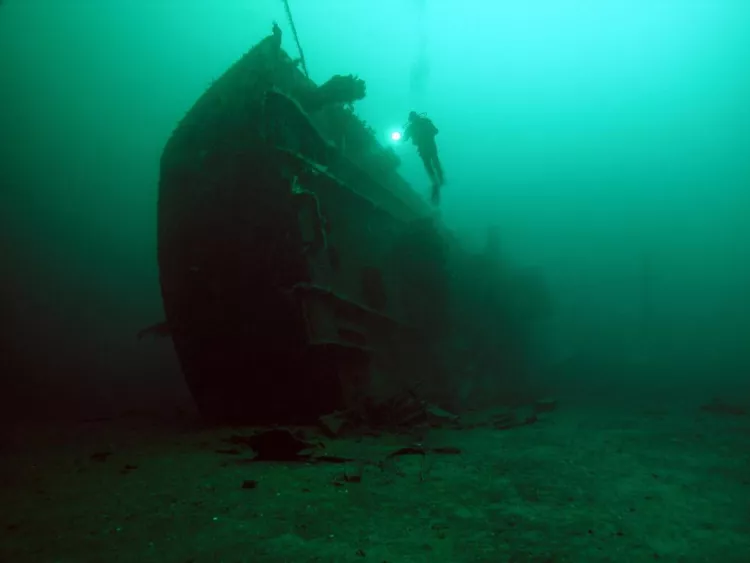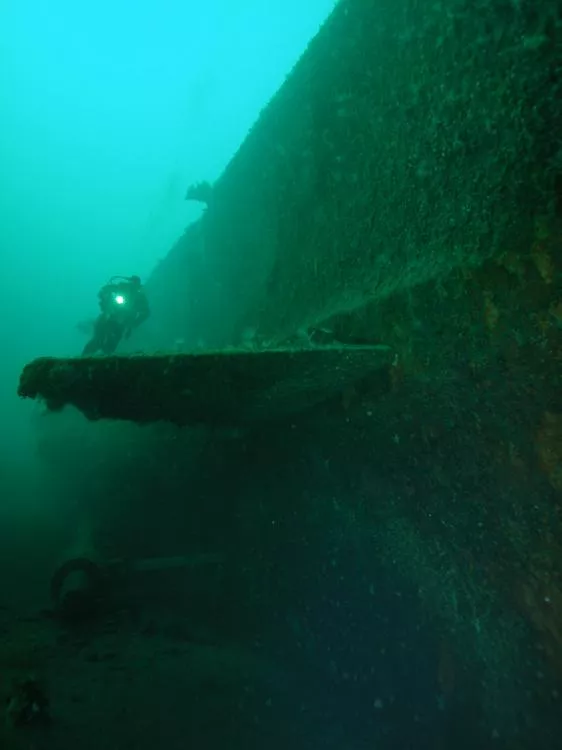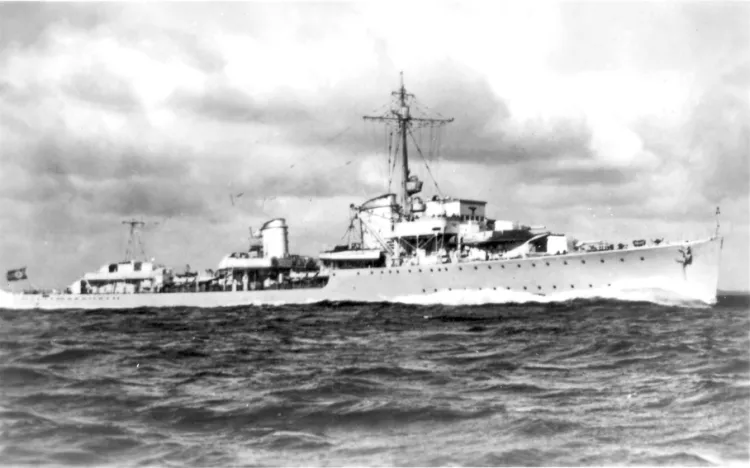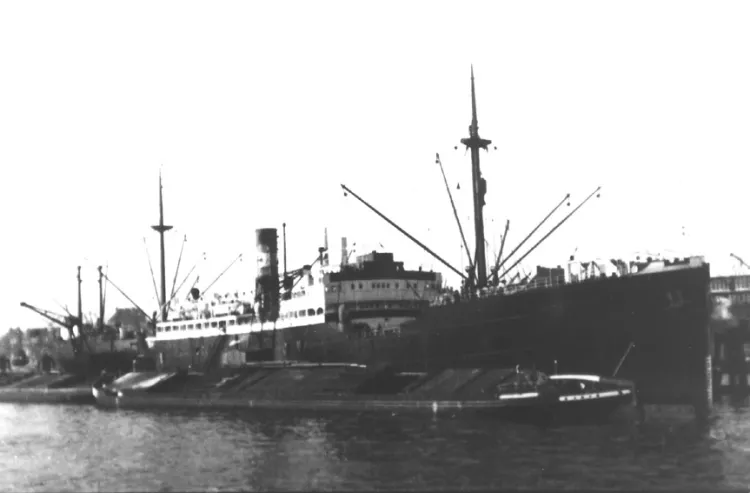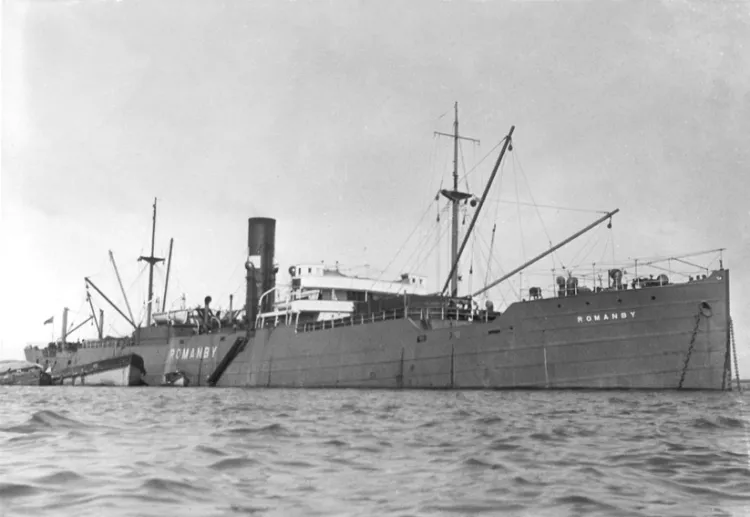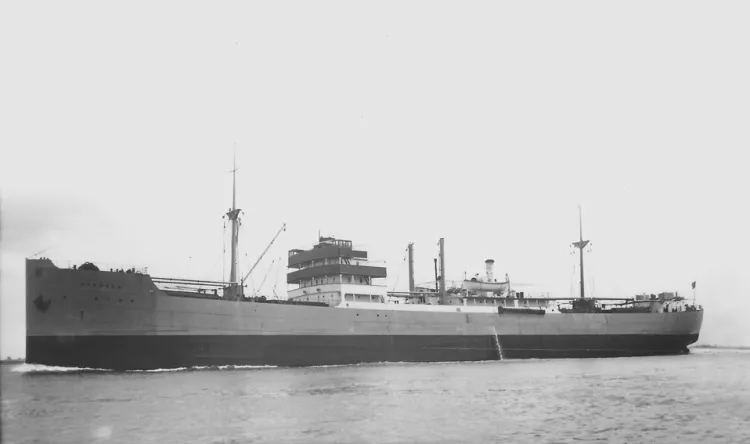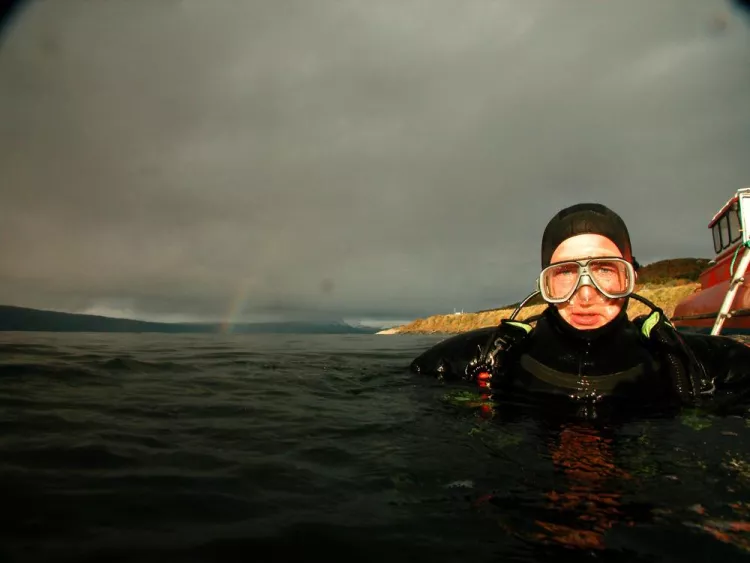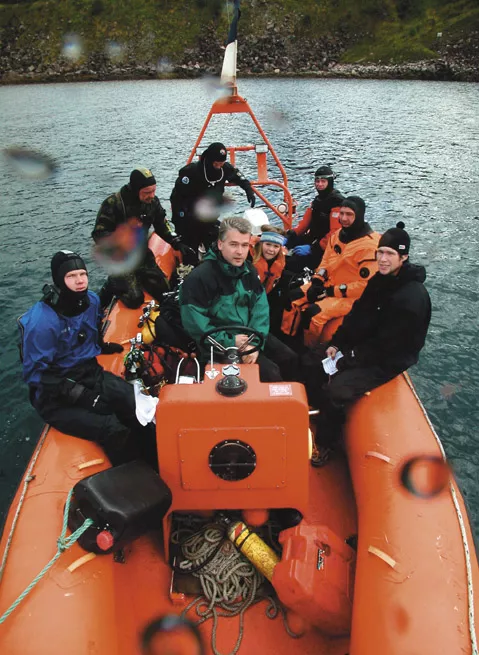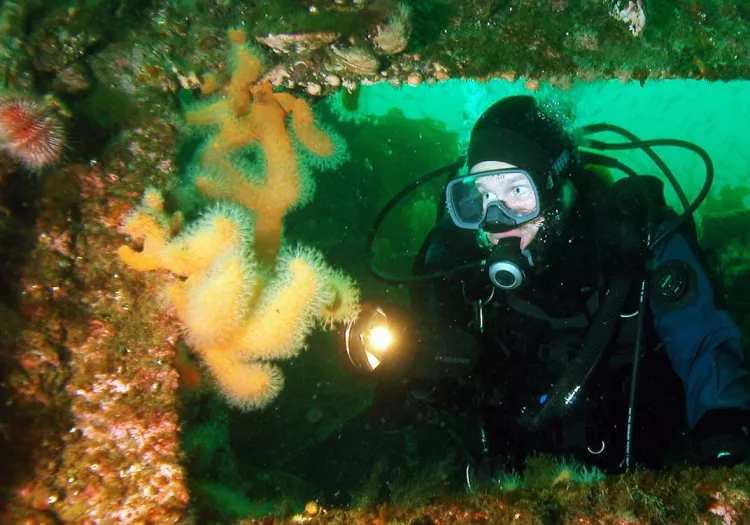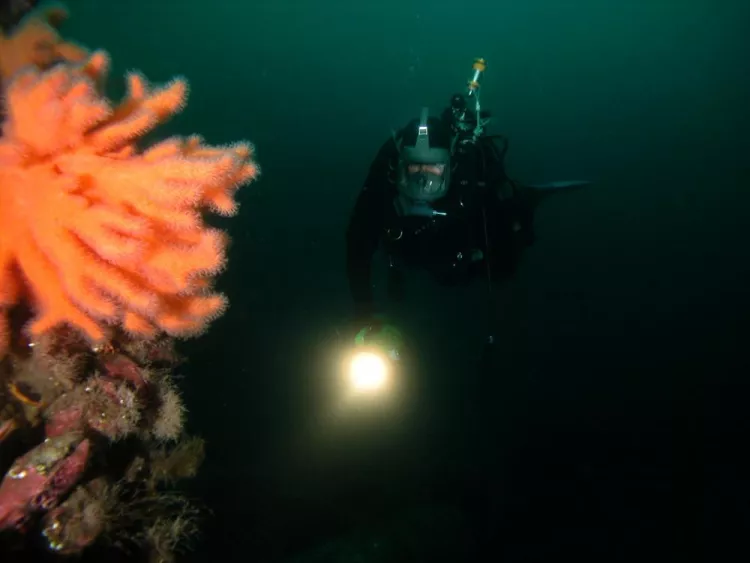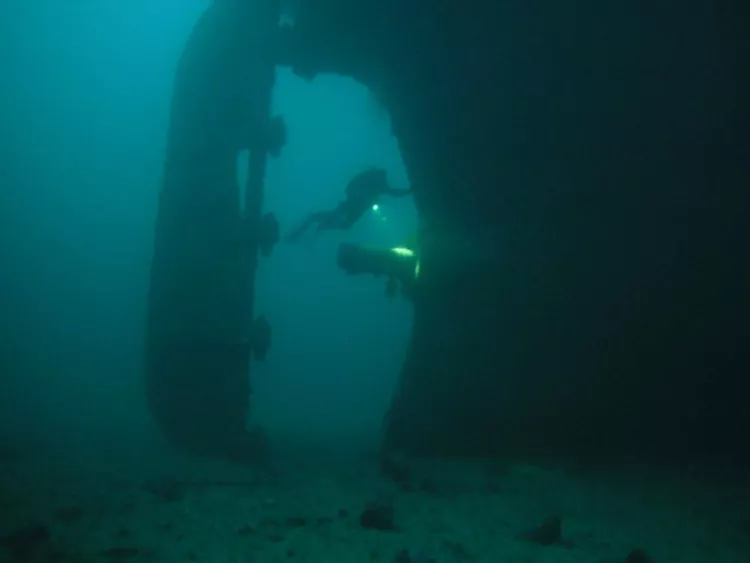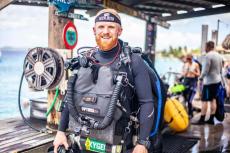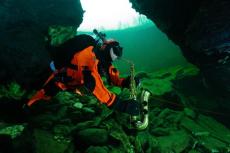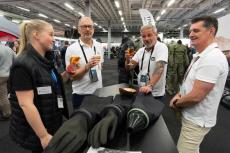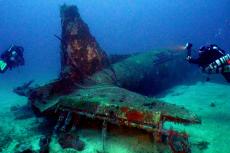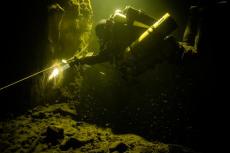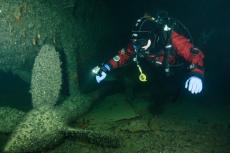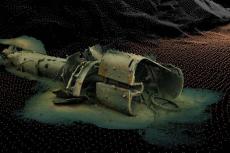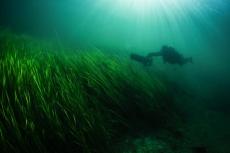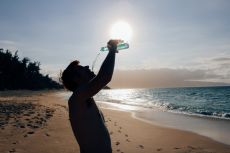The port of Narvik in north Norway was established around the export of iron-ore from Sweden. This was due to the very good harbour and its ice-free conditions. At the outbreak of World War II, Narvik was a strategically important harbour, and during the first few days of the war a very intense battle was fought out here between German, Norwegian and British naval forces.
During this fighting several ships were sunk, both warships and civil merchant ships. Narvik harbour was transformed into a great ship cemetery, with wrecks sticking up out of the water everywhere. Several of the ships were later salvaged, but many wrecks still remained. With its high density of wrecks, Narvik is an eldorado for wreck divers.
Contributed by
Factfile
Technical data
for the most relevant
wrecks in Narvik:
Wilhelm Heidkamp – Z-21 Built: 1939
Shipyard: Deschimag, Bremen #923
Owner: German Navy
Weight: 2411 tons displacement
Dimensions: 125.1 x 11.8 meters
GPS: 68°26.086”N 017°22.643’E
Anton Schmitt – Z-22 Built: 1939
Shipyard: Deschimag, Bremen #924
Owner: German Navy
Weight: 2411 tons displacement
Dimensions:125.1 x 11.8 meters
GPS: 68°26.058”N 017°22.588’E
Diether von Roeder – Z-17 Built: 1938
Shipyard: Deschimag, Bremen #919
Owner: German Navy
Weight: 2411 tons displacement
Dimensjon:125.1 x 11.8 meters
GPS: 68°26.083”N 017°22.682’E
Romanby Built: 1927
Shipyard: W. Gray & Co,
West Hartlepool #987
Owner: Ropner Shipping Co,
West Hartlepool
Weight: 4887 tons
Dimensions:127.9 x 18.0 meters
GPS: 68°25.533”N 017°22.629’E
Neuenfels Built:1925
Shipyard: AG Weser, Bremen #397
Owner: DDG Hansa, Bremen
Weight: 8096 tons
Dimensions:143.2 x 18.6 meters
GPS: 68°25.230”N 017°23.601’E
Stråssa Built: 1921
Shipyard: AB Götaverken,
Göteborg #356
Owner: Trafik AB-Grängesberg-Oxelösund, Stockholm
Weight: 5602 tons
Dimensions:120.1 x 16.3 meters
GPS: 68°25.142N 017°24.032’E
Martha Hendrikk Fisser Built: 1911
Shipyard: Ropner & Sons,
Stockton #456
Owner: Hendrik Fisser AG, Emden
Weight: 4879 tons
Dimensions:118.2 x 15.9 meters
GPS: 68°25.207”N 017°24.220’E
The importance of Narvik as a strategic harbour increased immediately at the outbreak of World War II. Germany needed large amounts of iron ore for their armaments industry, and had a big advantage, in that the ships carrying the ore could use neutral Norway and Sweden to get safely through, without the British navy being able to attack.
The export from Narvik went ahead, therefore, with ore ships from many countries. Due to the war between Finland and the Soviet Union, Norway had moved her largest warships to North Norway, and in April 1940 both the antiquated armoured warships were guarding Norway’s neutrality in Narvik, in order to ensure that the traffic with the ore carrying ships was not disrupted by the warring nations.
Attack on April 9th
The German attack was a great surprise for Norway, and the forces in Narvik were quite unprepared for the attack. In the morning mist, the armoured warship Eidsvold, which was anchored outside Framnesodden, discovered that foreign naval vessels were on their way into Narvik’s harbour. Even with its forty years, the armament of the Eidsvold was a big threat to the much smaller German destroyer, Wilhelm Heidkamp, which stopped a few ship’s lengths away. It must have seemed very strange for the commander of the Eidsvold to be requested to surrender to a German destroyer a long way in a Norwegian fjord.
As the Eidsvold prepared to open fire the Wilhelm Heidkamp fired torpedoes, which sank the Eidsvold in just a few seconds. The German ships could thereafter sail into the harbour basin, partly hidden in a strong blizzard. Onboard the armour-plated Norge, it was clear that something was terribly wrong, and slipped its moorings. When the foreign warships were discovered in the harbour, the Norge immediately opened fire against them.
Again, it went terribly wrong for the pride of the Norwegian navy. Norge was struck by a torpedo fired from the German destroyer Anton Schmitt, and capsized and sank in just two minutes. Out in the harbour basin, all was total chaos. The merchant ships launched lifeboats into the water and thereby rescued a number of survivors from the Eidsvold and Norge. The captain of the German ore-boat Bockenheim thought that it was British forces that were attacking, as three torpedoes hit the ship. He, therefore, ordered the ship to be beached and blown up.
In the space of just a short time, Narvik harbour was under German control. All the merchant ships that were not German were immediately put under German control, and the guns on the British cargo boats were demounted to be used as land-based artillery.
The British hit back
Even though the attack was surprising for Norway, the Royal Navy were already out in the Atlantic in a hunt for the German warships that were sailing north. Thus, the retreat of the 10 German destroyers in Narvik could be cut off. As the weather conditions were good for a surprise attack, the British second destroyer group was ordered into Ofotfjord in order to attack the German forces there, and to create the greatest possible damage to both the warships and the merchant ships there.
The attack was a total surprise, as the German destroyers at the mouth of the fjord had not observed the British attackers. The British could therefore fire their torpedoes straight into the harbour basin without meeting any serious resistance. The results were overwhelming. Two German destroyers and several cargo boats were sunk after being hit by torpedoes. In addition, many ships were damaged, and the German naval leadership in Narvik was nearly totally wiped out when the Wilhelm Heidkamp was hit by a torpedo.
The retreat of the British ships was, however, not quite so easy, as the German destroyers guarding the fjord threw themselves into the fray.
The British destroyers HMS Hardy and HMS Hunter were thus sunk in Ofotfjord. The remaining British forces also discovered the German supply ship Rauenfels, which was beached and blown up. Essential supplies of ammunition, weapons and provisions were thereby lost for the Germans.
After this, there were some quieter days. Planes from British aircraft carriers attacked the harbour but caused only limited damage.
On April 13th, the great battle of Narvik harbour took place. Under command of the British battleship HMS Warspite, a large British force sailed into Ofotfjord to annihilate the German destroyers. German submarines attempted to attack but the torpedoes didn’t work! Thus, all the remaining German destroyers could be destroyed. This time the British losses were small. Only the destroyer HMS Eskimo had its bows destroyed by a German torpedo. Most of the German destroyers were beached, emptied of ammunition and blown up. The merchant ships were not spared.
When the British forces pulled out, all the merchant ships were either sunk or destroyed. Narvik harbour was transformed into an enormous ships’ cemetery with wrecks sticking up out of the water everywhere.
Other shipwrecks
Narvik was a quiet place for the rest of the war. The most dramatic event that otherwise occurred was when the German ore-boat Odin sailed into the German anti-mine boom at the entrance to the harbour, and immediately sank. Apart from this, it was only minor ships sinking due to collisions, overloading, etc.
There are several wrecks of aircraft to be found in the area around Narvik, both in the sea, in fresh water, and in the mountains. During the fighting in 1940, German bombers also sank several allied ships in this area. The most well known of these is the Norwegian fast-route ship Dronning Maud in Gratangen.
Clearing up
The big work of salvaging the sunken ships in Narvik was started already in the Spring of 1940. Norwegian and German salvage boats worked at top speed, and in just a short time most of the wrecks which were blocking the quays were lifted and sent overseas for repair.
In addition, the wrecks out in the harbour basin were blown up so that the ore-boats could pass over them. After the war, the salvaging work continued on the remaining ships. From 1949 until 1956 most of the cargo boats were lifted and broken up for scrap.
Only the most damaged and heavily loaded were allowed to remain, and today they make a fine and exciting diving site for wreck divers. In 1964, three German destroyers were lifted from the harbour basin and moved out to Framnesodden, where they are out of the way of shipping traffic. Thus the totally destroyed armoured vessel Eidsvold lies in the company of its slayers.
Diving to the wrecks
All diving in Narvik is controlled by the Harbour Authorities. Anyone wishing to dive must register with the Narvik Harbour board, and sign a declaration regarding diving to the wrecks. These rules and regulations and self-declaration can be found on the internet at www.narvik.kommune.no/havnetj/dykking.html
When one has registered, a dive permit can be obtained for NOK 50.00 per week. The dive permit is valid for the wrecks: Martha Hendrik Fisser, Stråssa, Romanby, Neuenfels, Anton Schmitt, Wilhelm Heidkamp, and Diether von Roeder.
It is totally forbidden to dive down to some of the other wrecks that lie in the Narvik area. This is because they have either not been cleared of ammunition, or that they are preserved as a historic site. Among others, it is forbidden to dive down to Eidsvold, Norge, Odin, Erich Giese and all the German destroyers in Rombaks fjord.
Three German destroyers in one dive!
Imagine diving down to three German destroyers from World War II in one single dive! It is possible in Narvik. The destroyers Anton Schmitt, Diether von Roeder and Wilhelm Heidkamp lying outside Framnesodden, were opened for diving a few years ago. The destroyers make a fine and well preserved diving site, with a dive depth of 12 - 24 meters. The wrecks lie close together so that if you are a practised diver with lots of air, you can visit all these three wrecks in the same dive without the need for decompression.
Normally, there is a small plastic buoy attached to the Wilhelm Heidkamp to which the dive boat can be moored. Following the down-line, one arrives at the roof of the control room of the Wilhelm Heidkamp, which is the middle one of the three destroyers. The vessel lies on its keel, with its stern blown off. It is recommended that one swims straight out from the starboard of the Wilhelm Heidkamp, to arrive at the Anton Schmitt, some 7 meters away.
Anton Schmitt lies leaning on its starboard side. Up at the highest part (the port side) it is about 15 meters deep, and it is 24 meters at the deepest. Most of the ship’s stern has been blown away, but the wreck is otherwise fairly intact. Among other things, there is the wheelhouse with its many details.
A good route is to swim forwards to the bows and continue down towards the keel, thereafter swinging slightly towards the starboard where one will meet the bows of the Wilhelm Heidkamp. The bows of the destroyer stand up from the sea bottom, and it is a fine sight, to be remembered. This vessel could do 35 knots at its fastest. On the portside af the wheelhouse below the first deck, there is a hole straight into the crew’s laundry. Otherwise, there is a lot of detail that should be studied.
To get over to the Diether von Roeder you should swim straight out from the port side of the Wilhelm Heidkamp, that is, in the opposite direction from the Anton Schmitt. It is about a 30-meter swim. Of the Diether von Roeder, just about only the mid-section remains. The stern and the bows were blown away, and much of the remaining ship shows the ravages of time. But there are still a number of details that are worth taking back with you. Outside Framne-sodden, it is also not as muddy as it is in the harbour basin.
Wrecks of merchant ships in the harbour
The wreck of the British cargo boat Romanby lies in the harbour basin. The boat was being loaded on 9th April and sank after being hit by a torpedo on 10th April. Of the wrecks in the harbour, the Romanby is probably the best to dive down to. The wreck is fairly complete, and it is easy to swim through the corridors and down into the engine room, which lies completely open. It is recommended, though, that inexperienced divers should not swim down into the engine room.
Behind the rear cargo compartment, you can see, among other things, a folded stock anchor. Swimming further back towards the stern, and letting oneself glide out from the railing, you will see the fine rudder of the wreck together with the propeller axle that is sticking out. Being 130 meters in length, the Romanby is a big wreck to explore.
Beautiful growths of sea anemones and sea carnations can be seen in many places on the wreck. The depth along the deck is about 12 meters, and the maximum depth to the bottom outside the wreck is 28 meters. Romanby lies on its keel on a flat bottom. There are normally buoys on the wreck.
Neuenfels
Further in, lies the German cargo ship Neuenfels. This is the biggest wreck remaining in the harbour, and it is an imposing sight, with its 143 meters length and 18 meters breadth. Here, too, there is a maximum depth of 28 meters to the flat sea bed outside the wreck.
Along the deck, the depth is about 12 meters, which gives a long bottom-time and thereby good time to explore.
After being sunk, the Neuenfels lay with its masts and some superstructure above the surface, although they later had to be blown up in order not to be a danger for the shipping traffic. The remains of the blown-up superstructure lie on the bottom beside the wreck.
If you swim through the first cargo compartment from the stern you can see one of the reserve propeller blades. Down at the bottom, under the stern, both propellers can be seen sticking up from the seabed, and also the rudder which is half sunk into the mud.
Looking out from here, one can really get an idea of the imposing size of the wreck. The hole in the hull after the torpedo hit 10th April is also an imposing sight. Normally, there are buoys on this wreck too.
About 4-5 years ago the whole deck was covered with 30-50 cm of mud. All the mud has now gone after Narvik Urban Council extended the industrial area, which caused a greater flow between high-water and low-water. This should be taken into consideration when planning dives to the wrecks in the harbour. The surface current can often be extremely strong.
Stråssa and Martha Hendrik Fisser
Further out in the harbour basin lie the wrecks of the Swedish cargo boat Stråssa and the German cargo boat Martha Hendrik Fisser. There is only about 30 meters between the two wrecks, so it is quite possible to visit them both in a single dive as long as one just wants a general overview. If you just want to dive down to the Martha Hendrik Fisser, one usually does so via a descent/ascent from the Stråssa. One can then follow a rope that is stretched between the two wrecks. Both vessels have been affected by work with explosives, but the hulls and parts of the superstructures remain.
Stråssa was kept partly afloat after the attack but was finally blown up by the Germans in May. Today, the Stråssa is a fine wreck with lots of detail. The wreck lies upright on its keel on the flat seabed. The depth is about 28 meters to the bottom outside the wreck and 15 meters along the deck. Parts of the wheelhouse are still relatively intact, and one can look down into an open engine room with the ship’s big motor in place. There is also a workshop here with, among other things, a lathe and other machines. Unfortunately, due to the stagnant water, the visibility is generally not very good here. The wreck is well decorated with colonies of dead man’s fingers, and there is rich animal life.
The rope between Stråssa and Martha Hendrik Fisser stretches between the sterns of both ships. On Stråssa this rope is fastened beneath the railing at the front edge of the stern on the port side. On Martha Hendrik Fisser’s stern, the rope is fastened to the starboard side.
Over on Martha...
Martha Hendrik Fisser was the victim of a British torpedo 10th April. This wreck, too, lies upright on its keel on the 28 m deep, flat bottom. The depth along the deck of this wreck is 10-12 meters. If you get to this wreck using the rope from the Stråssa, you will arrive at the stern of the Martha Hendrik Fisser, where, among the first things you will see, is a curved staircase down to the rooms that were in the stern. In front of the stern lies the rear cargo compartment, where one can see a 4-bladed reserve propeller.
One can easily swim down into the after cargo compartment, towards the remains of the superstructure of the midship section, where the engine room, among other things, is to be found. The engine room of this wreck is not open from above, but it is relatively easy to swim through. Look out for possible divers behind you, as it can easily become cloudy. Penetration here should not be carried out by inexperienced divers. The wreck is otherwise easy for everyone to get around on. Remember to turn back in good time if you started your dive from the Stråssa, and must get back to the down-line on this wreck. If the visibility is not so good you should give yourself a good time for the return.
With depths down to some 28 meters (at the seabed), the most sensible is to use at least two dives to explore these two wrecks, as there are so many different things to see. If you keep to the deck, an overview of both wrecks can be obtained in a single dive.
Common to all wrecks in the harbour basin, is that the parts that have been blown away lie on the bottom just beside the wrecks. With a little planning, one can therefore also visit masts and superstructures, but visibility can be bad.
Hermann Künne in Trollvika
With regard to the German destroyer Hermann Künne, which lies in Trollvika in Herjangs fjord, the wreck can be reached both by car and by boat. Either way, it takes about 30-40 minutes to travel the 30 km from the centre of Narvik. If you intend to go by car, it is important first to contact some of the local divers from Narvik Sports Divers Club or Bjerkvik Divers Club. In order to be able to get down to the water where the Hermann Künne lies, you have to pass the boom which closes off the final stretch of the old national road to Harstad.
The wreck of the Herman Künne starts at the low-water line and goes down to 40 meters depth. It is a fine subject for photography, and a wreck which is suitable for divers at all levels of experience. Many details from the ship are to be found everywhere. The propeller has disappeared but the gigantic rudder is still there, sticking majestically out to the side. Many fish live in and around the wreck. Those who just want a relaxing time can study the many different things that they had on board. It is still forbidden to remove anything that lies in and around the wreck.
Plane wrecks too...
Not only is Narvik favoured with the wrecks of many ships, but there are also plane wrecks. In Rombaks fjord some kilometres north-east of Narvik lies a German Dornier 26 seaplane, also from the wartime. Relatively intact (one can actually see that it is a plane …), it lies at a depth of 22 meters.
The fuselage stands upright but the wings broke off when it sank and are now lying over the fuselage.
Another German plane from World War II is a Junker 52, which lies east in Hartvikvannet about 3 miles from Narvik. The plane is quite intact at a depth of 2 to 9 meters, and there is easy access to the plane in the summer. It is a good photographic subject.
Diving in Narvik?
As previously stated, a dive permit must be obtained from the Harbour Authorities (telephone 76- 95-03-75) in order to be able to dive in Narvik. Information, regulations or conditions for diving in Narvik, together with a self-declaration for a dive permit can be found on the Narvik Harbour board’s website: www.narvik.kommune.no/havnetj/dykking.html
- Narvik Dyk & Äventyr (Narvik Dive and Adventure) are currently the only tour operators who have a complete presentation with dive boats (live-aboard), overnighting and diving. The firm runs week tours from weeks 13 to 45.
See website: www.narvikdykaventyr.nu
- Narvik Dykkerklubb (Narvik Diving Club) can assist with tips about diving and overnighting, and also boat trips.
Contact Frank Bang on telephone 957-56-450. See also Bang’s website: http://home.online.no/~f-bang/
- Tore Lie and Torje Løvgren provide boat trips with a 23 ft RIB. Contact telephone 911-94-960 (Torje)
- Kristoffersen Dykk (Kristoffersen Dive and leasing) fill air, give service and sell equipment. Contact telephone 907-211-05 ■
Published in
-
X-Ray Mag #5
- Read more about X-Ray Mag #5
- Log in to post comments

